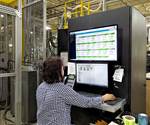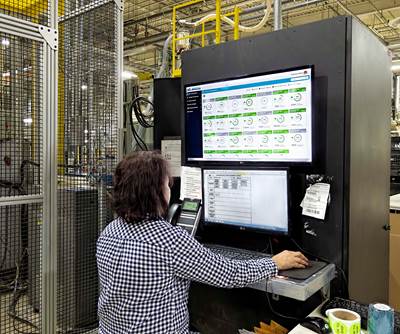Recommended Reading
Editorial
Two articles about the current state of manufacturing--and how to fix it--caught my eye.
I recently received emails linking me to two articles on manufacturing that I found intriguing. One was in early October, to commemorate National Manufacturing Day. Titled “Let’s Keep America’s Manufacturing Engine Humming,” the piece was written by David Chavern, COO and senior v.p. of the U.S. Chamber of Commerce, and appeared on the Commerce Department’s website, freeenterprise.com. The author posed a question—“What is the current state of this sector of U.S. industry?”—and offers some recommendations on “what we need to do to strengthen it.”
I learned some things from the piece. Here are some highlights:
•The U.S. remains the world’s largest manufacturer, accounting for 24% of world manufacturing value-added in 2010.The U.S. share of world manufacturing output, on a value-added basis, has remained fairly steady for about four decades.
•Factory jobs have declined from 19.5 million in 1979 to an all-time low of 11.4 million in 2010. But Chavern says offshoring explains only a tiny part (1%) of the decline. The real reason, he reports, is technological change, automation, and widespread use of information technologies.
•Labor shortages are a growing challenge for manufacturers, and Chavern writes that we must intensify our work to bridge that gap so manufacturing can continue to thrive and more Americans can be matched with today’s good jobs.
•To thrive in the future, Chavern says exporting is more important than ever. U.S. exports of manufactured goods topped $1.2 trillion in 2011. Meanwhile, total U.S. manufacturing value-added surpassed $1.8 trillion. In fact, exports generate revenue of more than $100,000 for each American factory worker, according to the U.S. Bureau of Labor Statistics and U.S. Department of Commerce.
•We must restructure our uncompetitive tax code, Chavern writes. We’ve got to restore common sense to our legal and regulatory systems. And we must make sure that manufacturers have access to affordable, reliable energy supplies.
The second article I found interesting was on a subject I have written about a few times in this space: Germany, and what the U.S. manufacturing sector can learn from the way things are done there. It was sent to me by a reader in response to my Editorial in September (“Boosting Business in Tougher Times”). The article was authored by Stefan Theile and was published in the Sept. 27 edition of the prestigious periodical Scientific American.
Titled “Why Germany Still Makes Things,” the piece attributes Germany’s success in manufacturing to the close links between “the people who make things” and researchers. It cites the development of the BMW i3, an all-electric car built entirely of carbon composites, the technology of which was honed by students at the Technical University of Munich. Writes Theile, “The steady pipeline of innovation that runs from university and government research labs to manufacturers…is one of the secrets driving the booming German economy.” Theile also points out that Germany’s manufacturing sector concentrates “on innovative products and processes not easily copied or undercut by cheaper wages.” Go to scientificamerican.com and search for “The U.S. Could Learn from Germany’s High-Tech Manufacturing” for a preview of this article.
While reading this article I learned of something else that suggests that we may be headed down a similar path. Hats off to The University of Massachsetts-Lowell, which recently unveiled an $80-million, 84,000-ft² Emerging Technologies and Innovation Center that is filled with plastics-processing machinery and equipment. The goal of this facility is to foster innovations and new technologies.
Read Next
See Recyclers Close the Loop on Trade Show Production Scrap at NPE2024
A collaboration between show organizer PLASTICS, recycler CPR and size reduction experts WEIMA and Conair recovered and recycled all production scrap at NPE2024.
Read MoreFor PLASTICS' CEO Seaholm, NPE to Shine Light on Sustainability Successes
With advocacy, communication and sustainability as three main pillars, Seaholm leads a trade association to NPE that ‘is more active today than we have ever been.’
Read MorePeople 4.0 – How to Get Buy-In from Your Staff for Industry 4.0 Systems
Implementing a production monitoring system as the foundation of a ‘smart factory’ is about integrating people with new technology as much as it is about integrating machines and computers. Here are tips from a company that has gone through the process.
Read More








